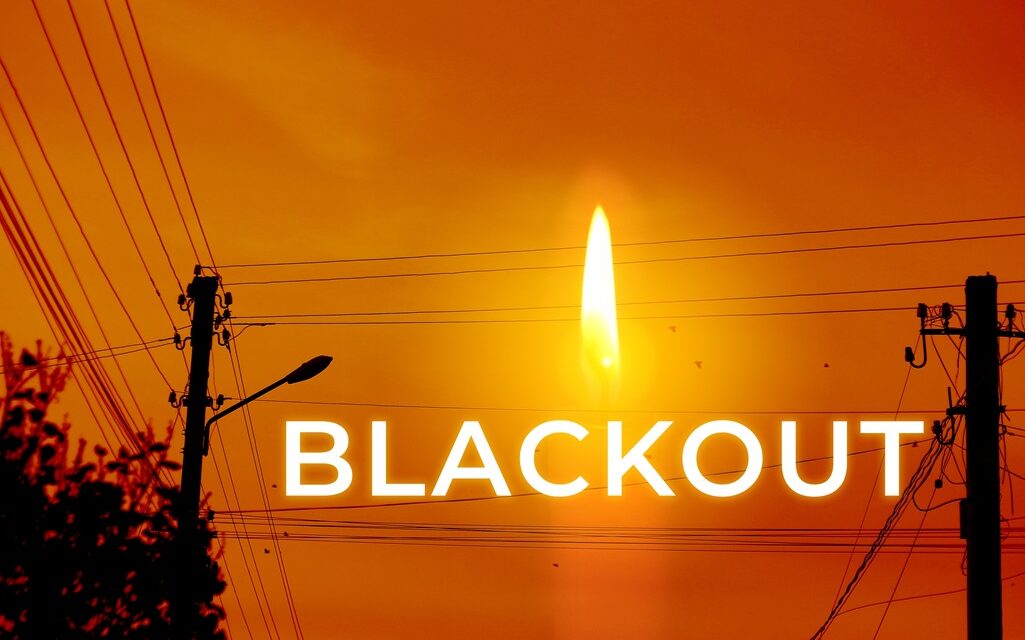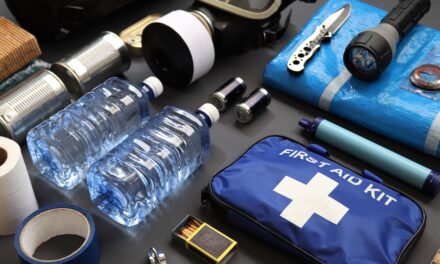When the power goes out, and the chill sets in, how do you keep warm? It’s a question that often leaves us cold, literally and figuratively.
Exploring the world of alternative heating options during a blackout, this post delves into the heart of survivalist warmth. We navigate through traditional methods, innovative solutions, and eco-friendly alternatives, shedding light on the best ways to combat the cold during a power outage.
The journey to self-sufficiency in heating during a blackout is more than just about staying warm; it’s about resilience, resourcefulness, and readiness. So, let’s embark on this enlightening journey together, as we uncover the secrets of alternative heating options during a blackout.
Can fireplaces provide heat during blackouts?
 Absolutely, fireplaces can be an effective source of heat during blackouts. They are a traditional heating method that doesn’t rely on electricity, making them a reliable alternative heating option. Wood-burning fireplaces are the most common type, and they can provide warmth for several hours with a good supply of wood.
Absolutely, fireplaces can be an effective source of heat during blackouts. They are a traditional heating method that doesn’t rely on electricity, making them a reliable alternative heating option. Wood-burning fireplaces are the most common type, and they can provide warmth for several hours with a good supply of wood.
The heat output of a fireplace depends on the type of wood used. Hardwoods like oak and hickory burn hotter and longer, while softwoods like pine and cedar ignite quickly but burn faster. It’s important to have a well-ventilated area for a fireplace to prevent carbon monoxide buildup.
Gas fireplaces are another option that can work during power outages. They use natural gas or propane as fuel, and many models come with a battery backup system. This ensures that the fireplace can still ignite even if there’s no electricity.
However, it’s worth noting that not all fireplaces are created equal. Some are more energy efficient than others. For instance, a fireplace insert, which is a closed-combustion system, can heat a room more effectively than an open-hearth fireplace.
Also, consider the safety aspects of using a fireplace during a blackout. Keep a fire extinguisher nearby, and ensure your smoke and carbon monoxide detectors are battery-operated or have a battery backup.
Remember, while fireplaces can indeed provide heat during blackouts, they should be used responsibly and safely.
What is a kerosene heater?
A kerosene heater is a portable, unvented heating device that is fueled by kerosene. This makes it an ideal alternative heating option during a blackout, as it does not rely on electricity. The heater operates by drawing kerosene from a storage tank into a wick, which is then ignited to produce heat.
Kerosene heaters provide a significant amount of heat, making them efficient for warming large spaces. They are also cost-effective, as kerosene is generally cheaper than other fuels. However, it’s important to use them in well-ventilated areas due to the risk of carbon monoxide poisoning.
Kerosene heaters are easy to operate, with most models featuring a simple manual control system. They are also lightweight and compact, making them easy to move around.
Despite their many benefits, kerosene heaters do have some drawbacks. These include the potential for fire hazards if not used properly, and the need for regular maintenance to ensure they remain safe and effective.
Here are some safety tips when using a kerosene heater:
- Only use 1-K grade kerosene.
- Never leave a lit heater unattended.
- Keep the heater away from flammable materials.
- Ensure proper ventilation to prevent carbon monoxide buildup.
SUBSCRIBE TO PREPARE MAGAZINE
In conclusion, a kerosene heater can be a reliable and efficient source of heat during a blackout. However, it’s crucial to understand how to use and maintain it properly to ensure safety.
Are propane heaters safe indoors?
Propane heaters are commonly used as alternative heating options during a blackout, but their safety indoors is often a concern. The main risk associated with indoor use of propane heaters is carbon monoxide (CO) poisoning. This colorless, odorless gas is produced when propane fuel doesn’t burn completely. Without proper ventilation, CO can build up to dangerous levels, leading to CO poisoning symptoms such as headaches, dizziness, and in severe cases, loss of consciousness.
However, this doesn’t mean that all propane heaters are unsafe for indoor use. Many modern units come with safety features designed to mitigate these risks. For instance, oxygen depletion sensors (ODS) can detect low oxygen levels, automatically shutting down the heater before CO levels become hazardous. Additionally, some propane heaters have built-in CO detectors that alert users when CO concentration is too high.
To ensure safety when using a propane heater indoors:
- Choose a heater designed for indoor use.
- Ensure the room is well-ventilated.
- Never leave the heater unattended.
- Regularly check and maintain the heater to ensure it’s in good working condition.
In conclusion, while there are risks associated with using propane heaters indoors, they can be effectively managed with the right safety measures and equipment.
How effective are wood-burning stoves?
In the face of a blackout, many homeowners turn to wood-burning stoves as an alternative heating option. Wood-burning stoves are highly efficient, able to convert up to 80% of the fuel’s energy into heat, making them a powerful source of warmth during power outages.
Moreover, these stoves are not reliant on electricity, thus providing a reliable heat source when the grid fails. They can also serve dual purposes, offering a cooking surface in addition to heat generation.
Wood as a fuel source is renewable and often locally available, reducing the carbon footprint associated with transporting other fuel types. However, it is crucial to use dry, seasoned wood to minimize smoke and maximize heat output.
- Wood-burning stoves require manual operation, adding fuel, and adjusting air control.
- They demand regular cleaning and maintenance to ensure efficient operation.
While wood-burning stoves are a viable solution for alternative heating during a blackout, they are not without their challenges. Proper installation and ventilation are critical to prevent the risk of carbon monoxide poisoning or house fires.
Despite these considerations, the effectiveness of wood-burning stoves as an alternative heating option during a blackout is undeniable. They provide reliable, efficient heat, and with proper use and maintenance, they can be a valuable addition to any home’s emergency preparedness plan.
SUBSCRIBE TO PREPARE MAGAZINE
Can gas stoves be used for heating?
When faced with a blackout, having alternative heating options is crucial. One such option is a gas stove. Gas stoves, typically used for cooking, can also provide a degree of warmth. However, it’s important to note that they are not designed as primary heating devices.
Firstly, gas stoves emit carbon monoxide, a colorless, odorless gas that can be harmful in enclosed spaces. Proper ventilation is necessary when using a gas stove for heating to prevent carbon monoxide poisoning.
Secondly, gas stoves can pose a fire risk. They should never be left unattended when in use as a heating source. Always keep flammable materials away from the stove and ensure the area is clear of any potential fire hazards.
- Ensure proper ventilation
- Never leave the stove unattended
- Keep flammable materials away
Additionally, gas stoves are not energy-efficient as heaters. They can consume a significant amount of gas, leading to high energy costs.
In summary, while a gas stove can provide some warmth during a blackout, it is not a recommended or safe heating option. It’s always better to have a dedicated alternative heating source, like a portable heater, or wood-burning stove which are designed for safe, efficient heat production.
Remember, safety should always be the top priority when dealing with alternative heating options during a blackout.
How do thermal blankets work?
Thermal blankets, often referred to as emergency blankets, are a standout in the list of alternative heating options during a blackout. They are designed using a material called Mylar, which is a thin, flexible insulating material derived from polyester.
• Mylar’s primary function is to reflect heat back to its source, making it a perfect material for thermal blankets.
When a person is wrapped in a thermal blanket, it traps the body heat that would otherwise be lost to the environment, effectively keeping the person warm. This is particularly useful during a blackout when traditional heating methods may not be available.
In addition, thermal blankets are waterproof and windproof, providing an extra layer of protection against harsh weather conditions. They are lightweight and compact, making them an excellent addition to any emergency preparedness kit.
The effectiveness of thermal blankets in preserving body heat makes them a popular choice for outdoor adventurers, emergency responders, and anyone needing to stay warm during a power outage. They are a testament to human ingenuity in creating simple, yet effective, solutions to stay warm.
While they may not replace the comfort of a heated home, thermal blankets can be a life-saving tool during a blackout, helping to prevent hypothermia and other cold-related illnesses.
Remember, during a blackout, staying warm is of paramount importance, and thermal blankets are a practical, cost-effective solution.
What are battery-powered heaters?
 Battery-powered heaters are an innovative solution for maintaining warmth during a blackout. Unlike traditional heating systems that rely on electricity or gas, these heaters operate on high-capacity batteries. This makes them an ideal alternative heating option when power outages occur.
Battery-powered heaters are an innovative solution for maintaining warmth during a blackout. Unlike traditional heating systems that rely on electricity or gas, these heaters operate on high-capacity batteries. This makes them an ideal alternative heating option when power outages occur.
The key advantage of these heaters is their portability. Being compact and lightweight, they can be easily moved around to heat specific areas, providing targeted warmth when and where you need it most. They come in various sizes and designs, catering to different heating needs.
Battery-powered heaters work by converting the battery’s stored energy into heat. Some models utilize infrared technology to generate heat, while others use ceramic elements. Regardless of the heating method, these heaters are designed to provide a comfortable temperature, even in the harshest of conditions.
- Energy-efficient: Battery-powered heaters consume less energy compared to traditional heating systems, making them a cost-effective choice.
- Safety: They are equipped with safety features such as automatic shut-off and tip-over protection, ensuring a safe heating solution during a blackout.
Despite their benefits, it’s important to note that the heating capacity of battery-powered heaters is usually lower than their electric counterparts. However, for short-term heating during a blackout, they are an excellent alternative heating option.
Is it safe to use candles for heating?
When considering alternative heating options during a blackout, many people turn to candles. While candles can provide a source of light and a small amount of heat, they are not a safe or effective heating solution.
The primary concern with using candles for heat is the risk of fire. Candles should never be left unattended, and they should always be placed in a stable holder away from flammable materials. Furthermore, the heat output of candles is minimal, making them an inefficient heating source.
In addition, candles can produce harmful indoor air pollutants, such as benzene and toluene. These pollutants can lead to health problems when inhaled over a long period.
Instead of relying on candles for heat, consider safer and more efficient alternatives. These could include portable propane heaters, which are designed for indoor use and provide a significant amount of heat. Another option is a wood-burning stove, which can heat a large area effectively.
- Portable propane heaters: These heaters are safe for indoor use and can provide a substantial amount of heat. They are also easy to operate, making them a practical choice during a blackout.
Remember, while it’s important to stay warm during a blackout, safety should always be your top priority. Therefore, candles should not be used as a primary source of heat.
SUBSCRIBE TO PREPARE MAGAZINE
Wrapping Up: Staying Warm During Blackouts
In conclusion, there are various alternative heating options available during a blackout. Fireplaces, for instance, can be an efficient source of heat, as can kerosene and propane heaters. However, safety should always be a priority, particularly with indoor propane heaters. Wood-burning stoves, while traditional, remain a highly effective heating solution.
Gas stoves, while not designed primarily for heating, can also be used to warm up your space. Thermal blankets, on the other hand, work by reflecting body heat and are a simple yet effective solution. Battery-powered heaters are a modern, portable option, although their heating capacity might be limited.
Candles, while providing a degree of warmth, should be used with caution due to the fire risk. It is crucial to remember that each heating option has its own pros and cons, and the choice will depend on your individual circumstances, needs, and safety considerations.
As we move forward, we may see advancements in heating technology that could provide more efficient and safer heating options during blackouts. Staying informed about these trends will ensure you’re well-prepared for any situation. Remember, planning ahead is key to staying warm and safe during a blackout.








